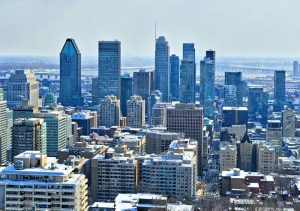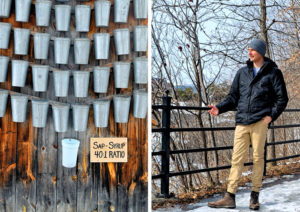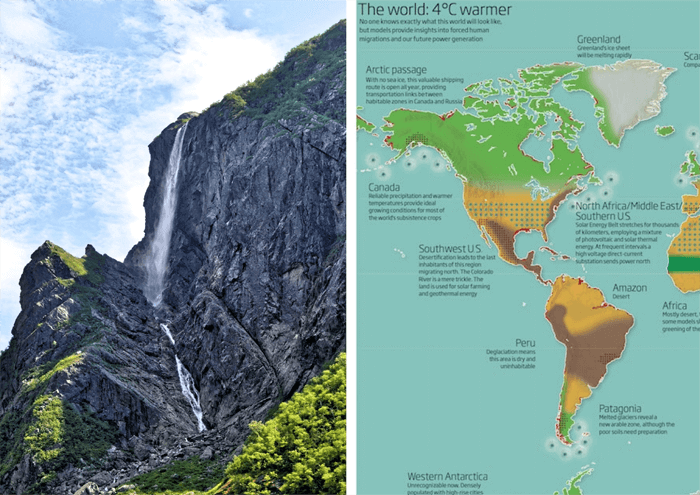
Climate Change – Part 2: Why should we care?
Now that you know what climate change is, why should we care? The earth’s climate has changed throughout history. Most of these slight changes are caused by small variations in the Earth’s orbit. But climate change as we know it now, is caused by an abrupt increase in temperature all over the world.
Ten of the last years were the warmest in human record. And 97% of climate scientists agree that climate change is not caused by the variations in the earth’s orbit or solar flares, but in fact are caused by human pollution. Human’s built airplanes, faster cars, computers, remarkable technology; and how the natural resources around us can be used to make our world better.
Obviously, that has led to many wonderful benefits, but also means we’ve increased our consumption of natural resources. These actions have released a lot of greenhouse gases into our atmosphere and has created the climate crisis we face today.
Anyone who has ever taken an economics class will know the phrase, “There is no such thing as a free lunch”. It means that everything has a cost. Even if that cost is not always immediately apparent. To archive anything, you must give-up something else.
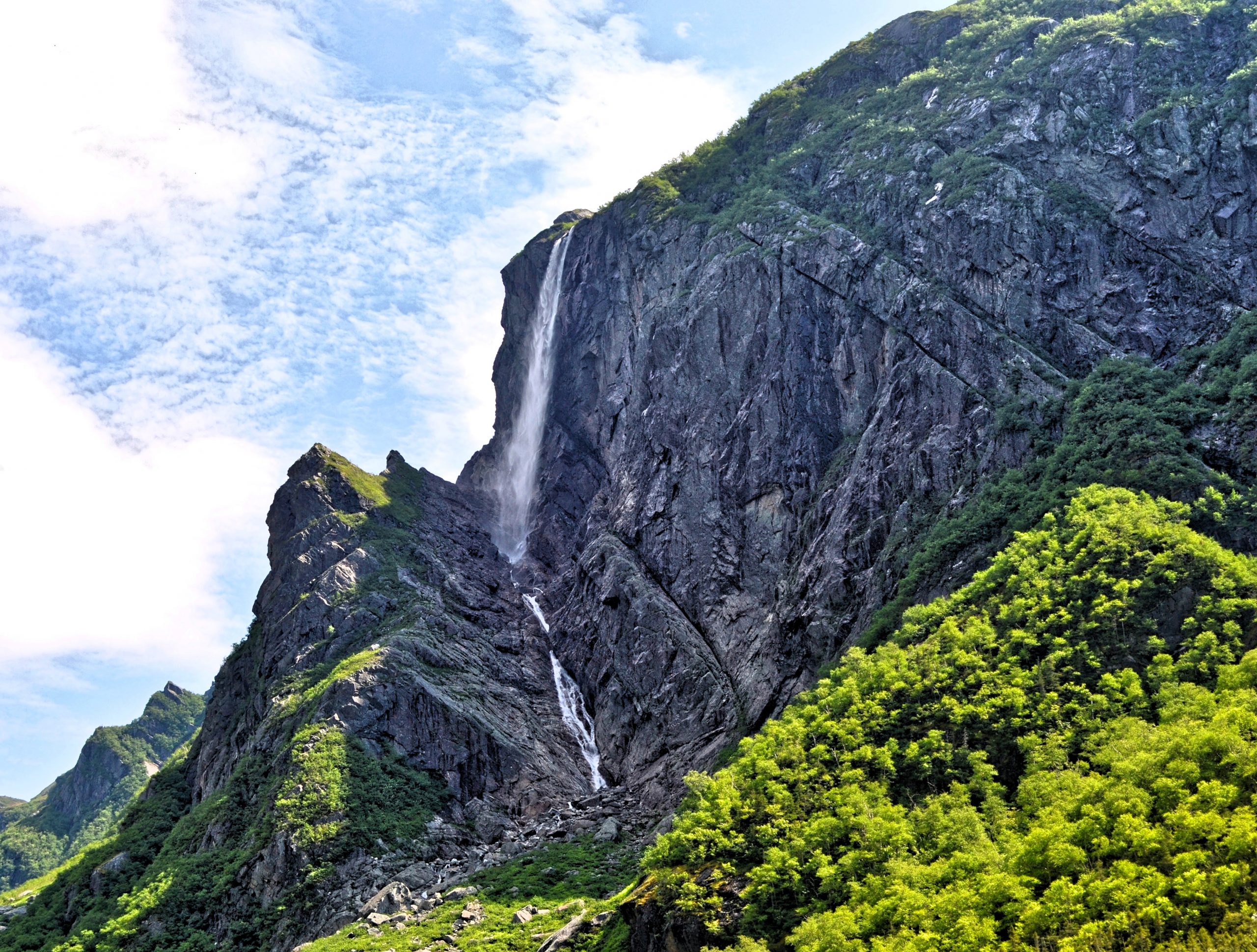
How will the heat change our planet’s geography?
The exact amount of heat the world will get is anyone’s guess, but let’s just say for fun that the planet’s temperature increases by only 4 degrees. There is a book that was written by a man called “Parag Khanna” in 2016, titled: Connectography. In this book, Parag explains what the world would look like if it were only 4 degrees Celsius hotter.
The Bad News:
The majority of the world is now a desert.
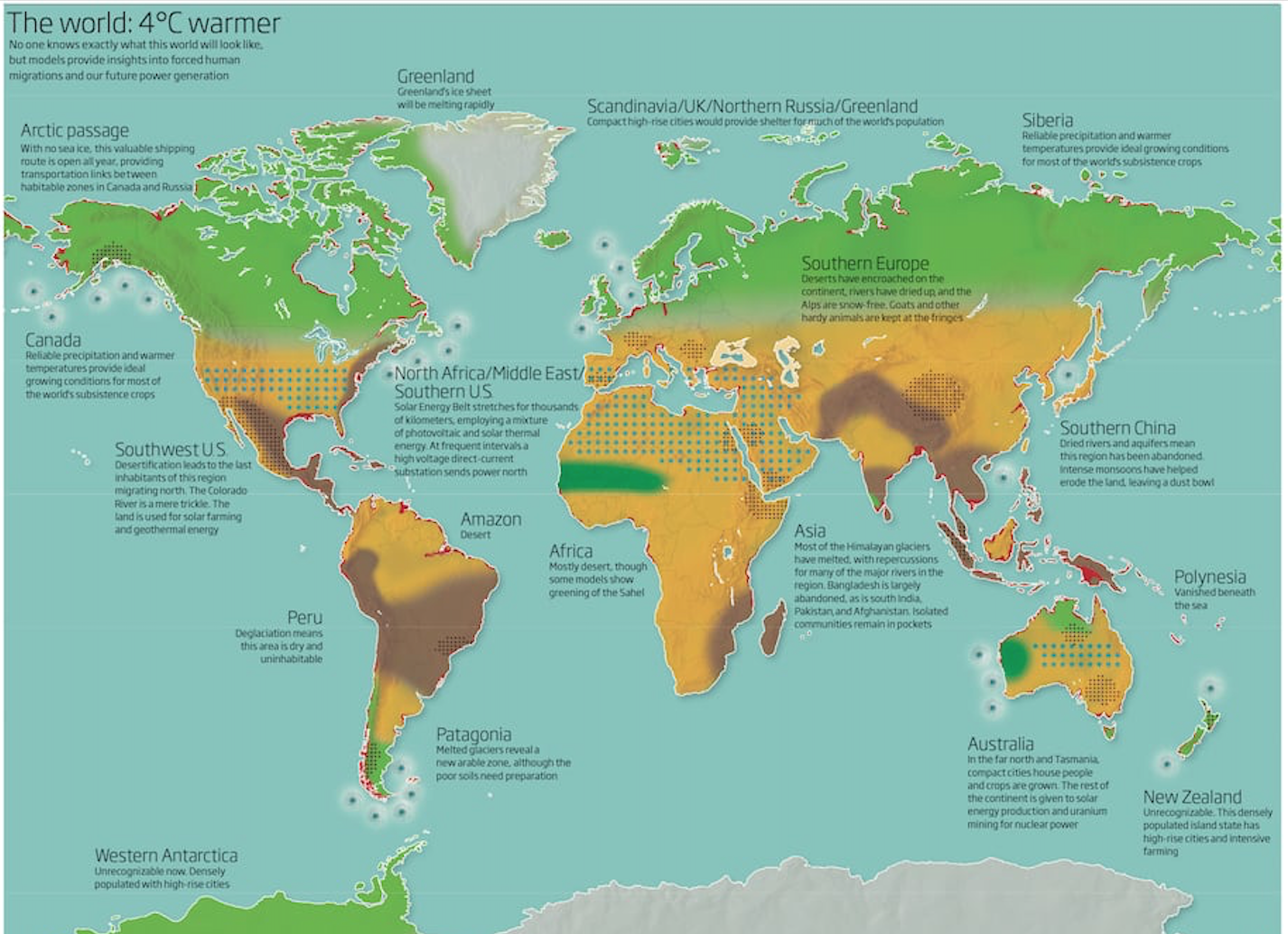 Connectography by Parag Khanna
Connectography by Parag Khanna
The countries that would be uninhabitable, (And get the bad end of the stick):
-
China (Becomes a desert)
-
Korea (Becomes a desert)
-
Japan (Becomes a desert)
-
South India (Flooded from rising sea levels) North India (Becomes a desert)
-
Pakistan (Severe Droughts after the Indus dries up)
-
Africa (Becomes an entire desert continent)
-
South America (Becomes an entire desert continent) But Chile, Argentina and Patagonia is still livable.
-
East Australia (Becomes a desert) West Australia (would still be livable, and ideal to regrow some forests).
-
USA (Becomes a desert) Population would have to migrate to Alaska.
-
Italy (Becomes a desert)
-
France (Becomes a desert)
-
Spain (Becomes a desert)
-
Germany (Becomes a desert)
-
Mexico (Becomes a desert)
The Good News:
The countries that would be thriving (And get the good end of the stick):
-
New Zealand (Becomes unrecognizable from what it looks today. Very habitable and the only remaining place in the Austral region for refugee population to settle. New Zealand becomes one of the most densely populated areas in the world. Massive skyscrapers would be built.)
-
Alaska, USA (Becomes an extremely pleasant place to live. The majority of the United-States population will need to be relocated here. It’s mostly uninhabited today, like a blank canvas that would be re-imagined. It is also very rich in resources.)
-
UK (Would still be habitable with a climate that resemble today’s southern France).
-
Ireland (Would be very habitable)
-
Iceland (In a very strategic position with warm climates, untouched land, farming and many resources).
-
Findland (Perfect location for farming)
-
Norway (Perfect location for farming)
-
Denmark (Perfect location for farming. Also has ownership over Greenland which is massive under-developed land.)
-
Sweden (Would be very habitable)
-
Canada (Nearly all of Canada would be a pleasant place to live, with ideal farming climate. Canada would open the floodgates of immigration and help the rest of the north and south america resettle)
-
Russia (Would become a pleasant place to live and would help the majority of Europe, Africa and Asia resettle. Siberia is also rich in resources that we currently can’t get to, because it’s too cold, right now. With the new climate, those resources would be available.)
. . .
Of course these are only speculations of a worst case scenario, if the human race would of payed absolutely no heed to climate change. I personally don’t think we could ever go over 2 degrees Celsius without the world making drastic changes and hitting the stop button.
Climate scientists believe that there are still a few things you can do on a personal level to help slow the shift. Recycle and re-use things, walk or use public transportation instead of driving a car, eat less meat (or no meat), turn off your electronics when you’re not using them, and spread the awareness towards this issue.
I hope that this has been instructive and helpful on some of the questions concerning climate change.
. . .


